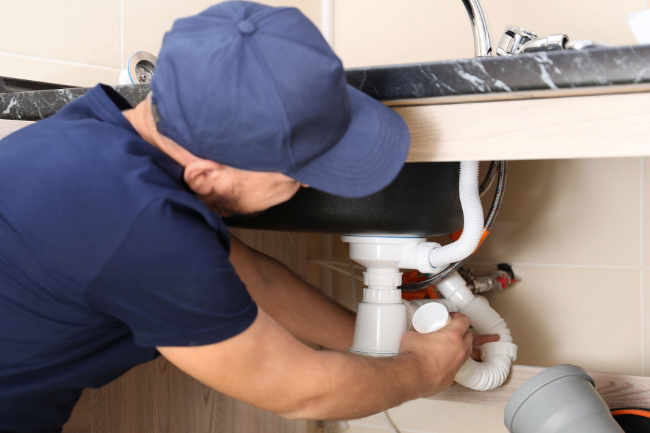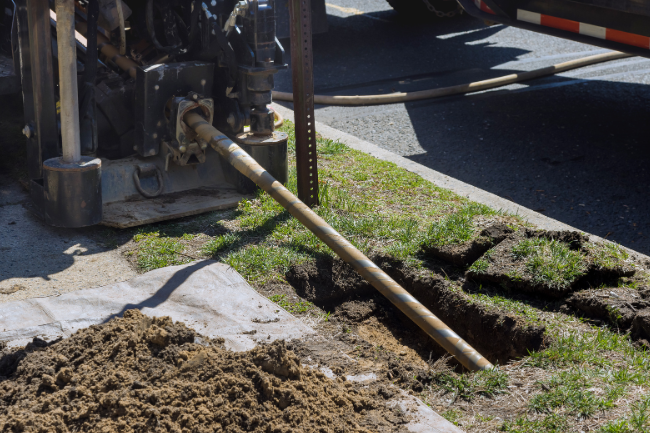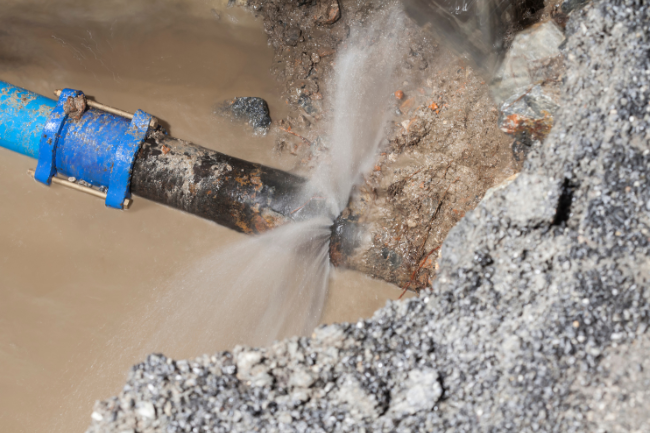What Are the Best Pipe Materials for Sewers & Drains in Sacramento?
Posted by William Heinselman on
 The water and sewer pipes running under Sacramento, California have seen a lot of change over the years. Dozens of different types of pipe material have been used over the years, and new materials are still being experimented with all the time.
The water and sewer pipes running under Sacramento, California have seen a lot of change over the years. Dozens of different types of pipe material have been used over the years, and new materials are still being experimented with all the time.
Because there are so many pipe materials available for replacing your existing sewer and drain pipes, many people are left with one major question: “what are the best pipe materials for sewers & drains in Sacramento?”
Let’s take a quick look at some of your options:
Iron Pipe
For decades, iron pipe has been used for water supply lines in many municipalities. Some older iron pipes have been in service for over 100 years!
Generally, these pipes are recommended for carrying drinking water rather than wastewater. The hardness of iron makes it resistant to root intrusion or collapse under heavy weight.
Pros:
- Extreme durability because of surface hardness of iron.
- Long useful life when properly maintained.
Cons:
- High cost to install (requires trenching for most major replacement/installation work).
- Prone to corrosion when exposed to acids or other chemicals found in the environment (using polymer coatings can mitigate this).
Steel Pipe
An alloyed metal that boasts even more mechanical strength than plain iron, steel is another popular material choice for water system pipes—particularly ones operating under higher pressures.
Overall, steel pipe has many of the same strengths and weaknesses of iron. Acidic chemicals can affect steel just like they do iron—but a bit more slowly. Also, steel pipe is pricier than iron pipe because of the metals used in the alloy.
Pros:
- Even better durability than iron.
- Resistant to bursting from mechanical force—steel tends to bend rather than break.
- Long useful life with proper care & maintenance.
Cons:
- High cost to purchase & install.
- Needs internal & external coatings to resist chemical corrosion.
Clay Pipe
The term clay pipe can be confusing for some, as it is often used to reference pipes installed in the ‘50s and ‘60s as well as more modern vitrified clay pipe.
If your plumbing has the older clay pipe from 60+ years ago, it almost definitely needs to be replaced. Older clay pipes were not made to a uniform standard, and may absorb water and weaken—or become brittle and shatter under even light strain.
More modern vitrified clay pipes are a bit better than the older pipes with less porosity in their surfaces and improved joint designs that employ polyurethane and other materials to provide a semi-flexible, leak-free joint.
Pros:
- Good chemical resistance compared to metal pipes.
- Somewhat less costly than steel/iron.
- Can be used in trenchless applications as a direct jacked pipe.
- Long useful life if nothing breaks the pipe.
Cons:
- Much lower pressure/force tolerance than metal. This limits clay to gravity-flow applications.
- Brittleness can make it prone to cracking/root intrusion.
- Limited pipe length because of kiln-firing manufacturing method.
Concrete Pipe
Concrete is a very popular material choice for municipal sewage applications. There are specific formulations of concrete for sewage use and potable water use. The biggest challenge in working with concrete pipe is getting the installation right.
Properly installed, concrete pipe can last for decades. Improperly done, and concrete pipe can fail very quickly. Also, extremely acidic soil or chemicals can degrade concrete pipe.
Pros:
- Concrete pipe has a much higher breaking point than clay—allowing for higher operating pressures and less risk of root/soil intrusion.
- Long useful life—barring chemical exposure or mishandling.
Cons:
- Requires careful installation—errors can dramatically shorten pipe life.
- Very heavy—calling for more equipment labor to install.
- May need separate coating of plastic material to prevent corrosion from acidic compounds in soil or wastewater.
HDPE (High-Density Polyethylene) Pipe
High-density polyethylene, or HDPE, is a relatively recent development compared to many of the materials listed above. HDPE is gaining in popularity as a pipe installation material because of its durability, flexibility, and corrosion resistance.
As noted in a Municipal Sewer & Water Magazine article, “nearly 90 percent of new pipe installations in Europe are HDPE.”
HDPE’s flexibility helps it survive seismic activity that would break or burst more rigid pipe materials—making it desirable in areas with strong seismic activity.
Pros:
- Resistant to collapse.
- Flexibility helps keep pipe intact during quakes.
- Joints can be permanently fused to prevent leaks.
- Resistant to chemical corrosion.
- Found in a variety of sizes and lengths.
- Compatible with trenchless installation methods.
Cons:
- Up-front costs may be higher than some materials.
- May weaken when exposed to extreme temperatures.
PVC (Polyvinyl Chloride) Pipe
One of the most affordable and prevalent plumbing materials used both in homes and municipal projects, Polyvinyl Chloride (PVC) pipe is a low-cost alternative used by many contractors who need durability and corrosion resistance on a budget.
In normal use conditions, PVC pipe is durable and corrosion-resistant. However, there are some weaknesses to PVC pipe. First, exposure to ultraviolet (UV) rays, such as those put out by the sun, can degrade PVC—so it’s not recommended for outdoor use.
Also, PVC pipes have a lower failure point compared to metal and concrete pipes—PVC isn’t recommended for high-pressure systems that exceed 300 psi. While it is a polymer, PVC is more rigid than HDPE, and cannot adjust to soil movement nearly as well.
Proper installation is key for preventing most of the common issues with PVC pipes.
Pros:
- Low cost.
- Relatively easy to install.
- Moderate durability and corrosion resistance.
Cons:
- Improper installation/manufacturing can create leaks and other problems.
- Prone to bursting when soil shifts.
- UV radiation and high temperatures weakens pipe.
Which is the Best in Sacramento?
Overall, when you consider cost of installation, useful life, and resistance to the occasional bit of seismic shock from that fault line running through our state, HDPE pipe may just be the best pipe material to use in Sacramento.
However, that’s not to say that other pipe materials aren’t useful. In fact, there may be specific situations where steel or concrete pipes might be a better long-term choice because of their tensile strength or temperature tolerance.
Before settling on any one pipe material for your next sewer & drain upgrade, contact an experienced plumber for some more specific help and advice regarding your application.
Topics: Pipe Bursting, Plumbing in Sacramento, Home Plumbing, Sewers, Drain Cleaning and Repair







